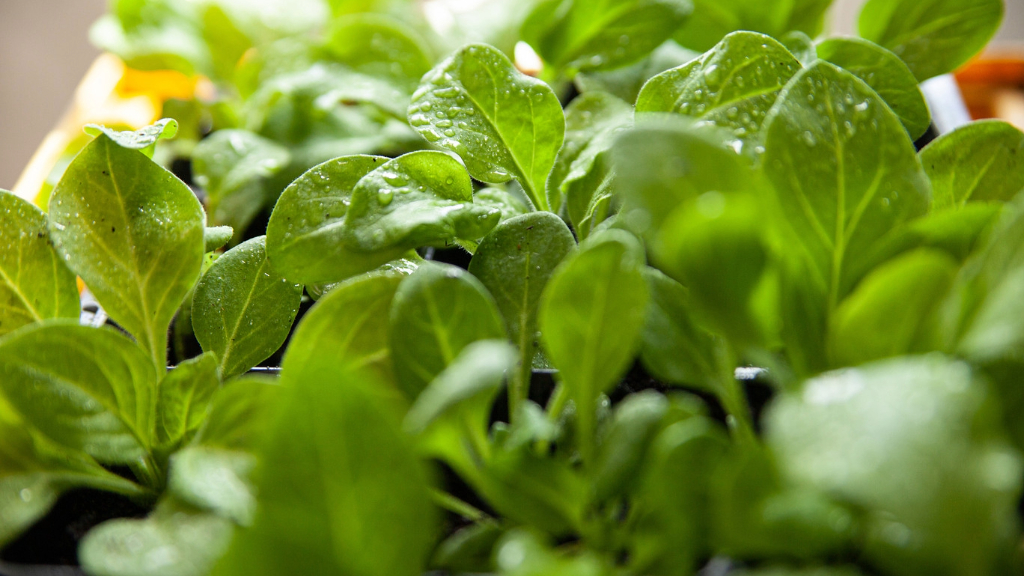Origin Of Spinach Plants - Learn About Spinach History


National Spinach Day (March 26) is a time to reflect and celebrate one of the most popular tender leafy greens in the U.S., and what better place to explore the history of spinach than Crystal City, Texas - the spinach capital of the world. When most cities were falling on hard times during the Depression, Crystal City had a booming spinach industry thanks to a popular cartoon character.
In 1929, Popeye the sailor man was introduced to the world by creator Elzie Crisler Segar. This spinach-eating muscle man quickly rose in popularity, as did the sales of his favorite energy-bolstering leafy greens. To honor the prosperity Popeye brought to Crystal City, the Texas town erected a statue of him in 1937.
Spinach History
Spinach sales have continued to rise in the U.S. following the 1930's Depression, reaching an all-time high in 2007. That's not surprising considering spinach has been a part of the human culinary experience for over 2,000 years. Little is known about the origin of spinach plants, so let's take a look at what we do know:
- Botanists place spinach plant origin in and around ancient Persia (modern day Iran), where it was likely cultivated from Spinacia tetranda, an edible wild green. It is believed spinach was then introduced into India and Nepal.
- Written records indicate spinach reached China from Nepal in the year 647 CE. Here this much beloved vegetable earned the name "Persian Green."
- It's believed Muslims introduced spinach to Sicily in 827 CE. Written documentation places spinach in the Mediterranean area by the 10th century.
- The Moors from North Africa are credited with bringing spinach to Spain in the 11th century, and this leafy green reached Germany by the late 1200's.
- During the European Middle Ages, spinach was widely cultivated and distributed throughout the continent. The use of spinach as a staple in Mediterranean cooking was widespread during the 1400's. In England, spinach was called the "Spanish vegetable" and was valued as an early spring crop.
- In the 1500's, Catherine de Medici is credited with the culinary term "a la Florentine," after bringing her Italian cooks with her when she married into the French royal family. The term refers to French spinach dishes created in honor of this Florence native.
- Spinach reached the Americas with the first New World settlers.
- In the early part of the 20th century, disease-resistant and slow-bolting spinach varieties were developed. The well-known and much beloved Bloomsdale Long Standing spinach variety came from that era.
Today, spinach is grown worldwide. China, the U.S., and Japan are the leading spinach producing countries with over 20 million tons of this leafy green cultivated each year. No doubt, there's plenty of spinach to go around. So grab a handful to add to your favorite salad or entree and celebrate National Spinach Day with this tasty, tender green.
Gardening tips, videos, info and more delivered right to your inbox!
Sign up for the Gardening Know How newsletter today and receive a free copy of our e-book "How to Grow Delicious Tomatoes".

Laura Miller has been gardening all her life. Holding a degree in Biology, Nutrition, and Agriculture, Laura's area of expertise is vegetables, herbs, and all things edible. She lives in Ohio.
-
 Terrifically Tubular Flowers For Hummingbirds: 9 Tube-Flowered Plants To Attract Hummers
Terrifically Tubular Flowers For Hummingbirds: 9 Tube-Flowered Plants To Attract HummersGrowing tubular flowers for hummingbirds helps you create the optimum feeding conditions for your winged friends. Here are nine tubed delights for hummers
By Tonya Barnett
-
 How To Grow Hydroponic Tomatoes For Fresh Indoor Harvests – No Soil Required
How To Grow Hydroponic Tomatoes For Fresh Indoor Harvests – No Soil RequiredLearning how to grow tomatoes in water is easy and allows you to harvest fresh-home-grown produce in every season without any mess.
By Ellen Wells